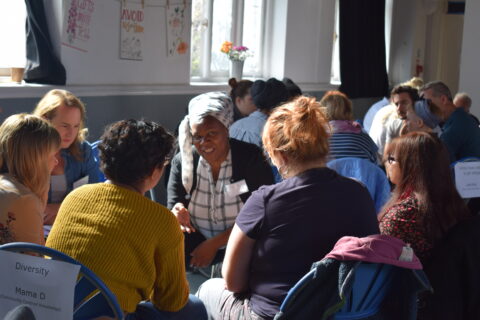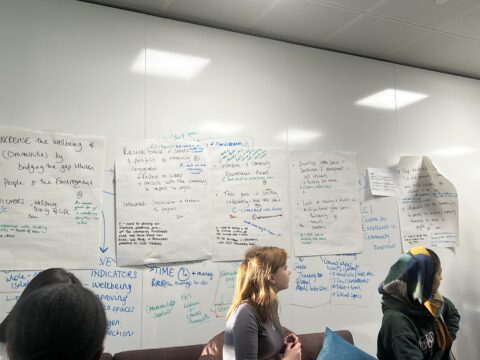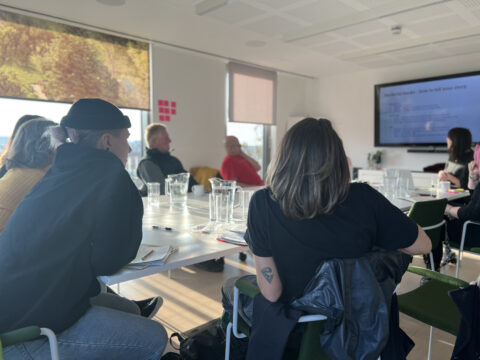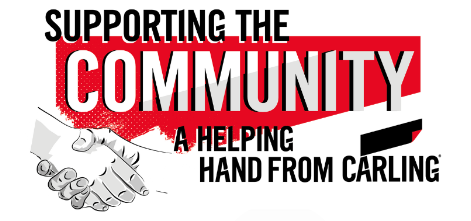Participatory grant-making is a collaborative way of working that brings community members into the grant-giving process. The Fund for Global Human Rights does a deep dive into participatory grants in this intro.
Here’s what it all comes down to:
In traditional grant-giving, the organisation giving the money runs the show. Funders decide what needs should be addressed, how funds can be used, and who’s qualified to (and ultimately who does) receive those funds. In this approach, community members are just beneficiaries of the funds.
Participatory grant-making puts communities at the centre of the strategy. In this model, members of the community help decide:
- What core community challenges need to be solved
- How grant money can help address those problems
- What criteria organisations need to meet to apply for funds
- Which organisations should receive funding
The thinking is that by allowing community members the power to choose what and who to fund, we can co-create better solutions that will have more meaningful impact.
4 benefits of participatory grant-making
Participatory grant-making involves getting consensus from multiple stakeholder groups with different experiences so it can take more time and resources than a traditional grant programme. But the approach yields huge value.

1. Supports more informed grant decisions
Funders may have money to help, but people within communities are experts on their lived experiences. No one understands better than they do what challenges community members are facing and how funds can best be applied to solve those challenges.
2. Creates value beyond the money
Participation in the grant process nurtures leadership among community members. They build vital knowledge around collaboration, communications, programme design, fundraising, networking, and more. Participants often grow into roles as community leaders, empowering them to drive long-term change.
3. Promotes social justice and equity
Traditional grant-making reinforces structural systems of power by giving funders full control. A participatory approach decentralises power and invites those who’ve been historically excluded to participate in the decision-making process.
4. Strengthens trust with beneficiaries
Co-creation builds relationships and strengthens trust between funders and grantees. For community members, this creates more trust and psychological safety. For funders, it can lead to more favourable public perception and improved brand reputation.
Participatory grant-making requires a perspective shift
Participatory values include: transparency, collaboration, inclusion, equity, and social justice. These values have emerged in many areas of society over the last couple of decades, accelerated by rising awareness of systemic inequities and a common desire to create systems that benefit everyone.
But creating participatory models isn’t quite as simple as just slapping on some new labels and organising a community board. It takes a radical shift in the way funders see themselves. Dennis (Denn) van Wanrooij explains it well in Candid Learning for Funders’ participatory grantmaking guide
“[Participatory grant-making] is not just about making grant decisions. It’s about rethinking your role as a funder on a daily basis and seeking community participation in all layers of your work. And it’s about seeing yourself not as a funder but as a colleague with your grantees, as well as a member of the community. True participation is about supporting, learning from, and partnering with grantees.” ~Dennis van Wanrooij
To make this shift, organisations must be willing to let go of some control. They can absolutely guide the process, but they’re not the be-all and end-all decision-makers.
Easy ways you can increase participation in your grant-giving
There are several stages in the grant-making process: strategic planning, grant promotion, generating and reviewing applications, voting on and selecting recipients, and post-award communications and impact analysis.
A fully developed participatory grant programme involves community members in all stages. But this level of participation takes time to build. And we know there can be internal barriers to implementation.
However, participatory grantmaking isn’t all or nothing. So even if you can’t put all the power into the hands of community members, know that it’s ok to start with small steps.
Here are a few ways you can get started:
1. Community survey
Conduct a community survey to better understand community needs before deciding on your grant’s overall direction.
2. Advisory committee
Establish an advisory committee that includes community representatives who can advise on ways to best benefit those in need.
Client case study:
The Green Youth Board is a committee of young people living in housing associations (HAs). They advise several HAs on how to improve green spaces for urban residents. They decide which nature-boosting projects should receive microgrants; setting grant criteria, judging nominations, and awarding funds. As residents, their local knowledge is key to the success of this funding.
3. Open nominations
Ask community members to nominate their favourite charitable organisations as grant recipients.
Client case study:
Using ActionFunder nomination form functionality, Greene King customers can nominate their favourite community project through QR codes on point-of-sale material and certain Greene King products. Now in its 3rd year, this campaign has encouraged huge customer engagement, with over 10,000 nominations submitted by Greene King customers.
4. Inclusive judging panels
Expand judging panels to include more representatives from the community.
Lack of diversity on a panel leads to lack of diversity in funding outcomes due to unconscious bias. We’ve seen this clearly illustrated time and again. So, if you want healthy debate, fresh ideas, and to make sure you don’t end up funding the same sorts of projects over and over, bring in some new voices!
Client case study:
Get Living used resident-led judging panels as part of a ‘residents’ engagement package’ to integrate participation from local stakeholders.As part of the Brent Cross Town Fund, local councillor Alan Schneiderman joined the judging panel. Including someone who can bring insight into community need, such as a member of the local council or a local charity, is another way to effectively use participatory methods.
5. Open voting
Open the voting process to the community at large, letting the people decide which projects receive funding.
Client case study:
The Carling & Proper Pubs Fund was set up to support communities around specific pubs. Community projects within 10 miles of each participating pub could apply to the fund, and pub customers voted using point-of-sale material in the pubs.
Empowering locals with the democratic decision was great for customer engagement (every participating pub ran out of voting cards!), and helped to build stronger relationships between the nominated non-profits, the pubs, and the wider community.
As you can see from these examples, participatory grant-making isn’t all or nothing! You can make your grant-giving programme more participatory in different and scalable ways. At ActionFunder, we can help you test mechanisms to see what works for your campaign, starting small and building up, learning as you go – an approach that many of our clients are taking.
Speak to one of our team about how participatory grant-making could support your campaign aims.
Tips to run an effective participatory grant-making program
Whether you’re new to grant-making in general or trying to switch from a traditional to a participatory model, here are a few tips to guide you along the way.
- Get clear about your motivations for doing participatory grant-making.
- Talk to others who run participatory grant-making programs. Find out what they’ve learned along the way and how they solved their challenges.
- Secure internal stakeholder alignment. Then get buy-in from any other stakeholders.
- Practice the art of listening and hone your collaboration skills.
- Continually reflect on, solicit feedback about, and iterate your process.
- Consider using a platform like ActionFunder whose functionality makes it easy to encourage community participation. Ramp up your stakeholder engagement using our nomination forms or voting tool so that employees or customers can have a say on where your funding goes.
No matter what approach you’re using, the fact that you’re starting a grant program or launching a community fund deserves to be celebrated. We applaud your dedication to making an impact!



